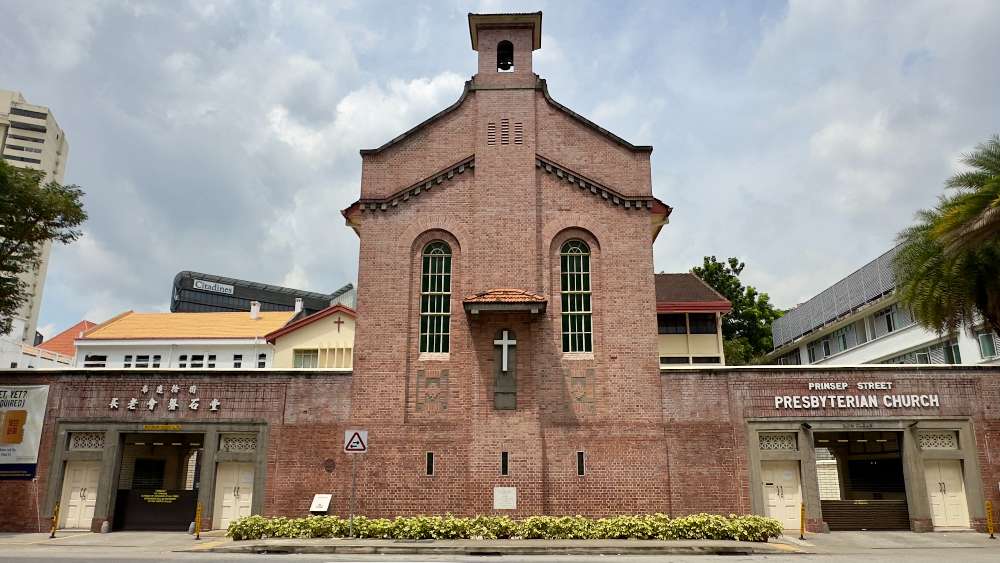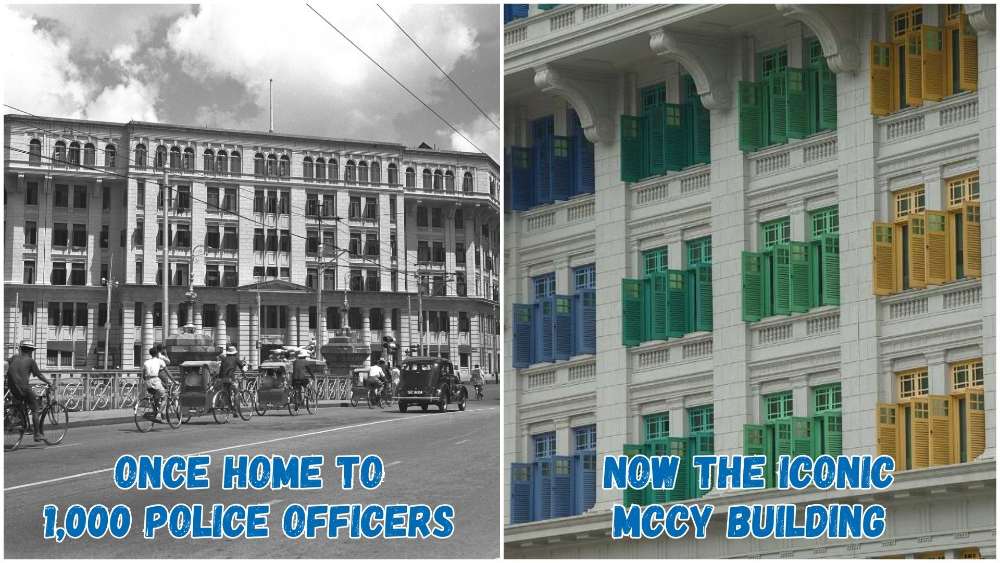National Monuments Of Singapore: Prinsep Street Presbyterian Church
What is a National Monument? Who gazettes them? How many national monuments are there in Singapore? To date, the Preservation of Sites and Monuments, a division of National Heritage Board, has identified and gazetted 75 buildings, structures and sites of national significance as an integral part of Singapore’s built heritage.
And we're here to tell you all about them - one National Monument at a time!
You've probably passed by or stepped into more than a few of them without realising they were National Monuments: Al-Abrar Mosque, Asian Civilisations Museum, the Civilian War Memorial, Saint Andrew's Cathedral, the Esplanade Park Memorials, Fort Siloso on Sentosa - no need to plan an itinerary for friends visiting from overseas; just show them this article ✌️
In this edition, we take a more in-depth look at one of Singapore's oldest Presbyterian churches, Prinsep Street Presbyterian Church (PSPC).
📍 Location
PSPC was the 44th building to be gazetted as a National Monument, and is located near other National Monuments such as Abdul Gafoor Mosque and The Cathay. The MRT stations nearest to it are Rochor, Bencoolen and Bugis.
📅 Significant dates
Dates built:
- 1843: The Malay Chapel was constructed by Reverend Benjamin P. Keasberry
- 1930-4 Feb 1931: The old church was torn down, and a new church building was constructed
Milestones:
- 1886: The Malay Chapel was renamed the Straits Chinese Church
- 1904: The Widows' and Orphans' Home was established
- 1930: The Singapore Boys' Brigade was founded by James M. Fraser
- Nov 1931: The church adopted the name Straits Chinese Presbyterian Church
- 1955: The church was now known as Prinsep Street Presbyterian Church (PSPC)
Date gazetted: 12 Jan 2000
📜 History
The origins of PSPC started with the arrival of Reverend Benjamin P. Keasberry, a Protestant missionary from the London Missionary Society (LMS), who came to Singapore in 1837. While many missionaries departed from Singapore for China during the 1830s and 1840s, Keasberry stayed in Singapore to minister to the Malay community.
In 1843, Keasberry constructed a small chapel in Kampong Bencoolen (now Prinsep Street) using donations from Singapore residents. It was initially called the "Malay Chapel", and Keasberry conducted services in Malay. He also later established a school for Malay boys in the Rochor area.
Over an extended period of time, the church was affectionately called Greja Keasberry ("Keasberry Church" in Malay) as a tribute to its founder. The Malay services drew not only Malays, but also Peranakans (Straits Chinese) and girls from the neighbouring Chinese Girls’ School.
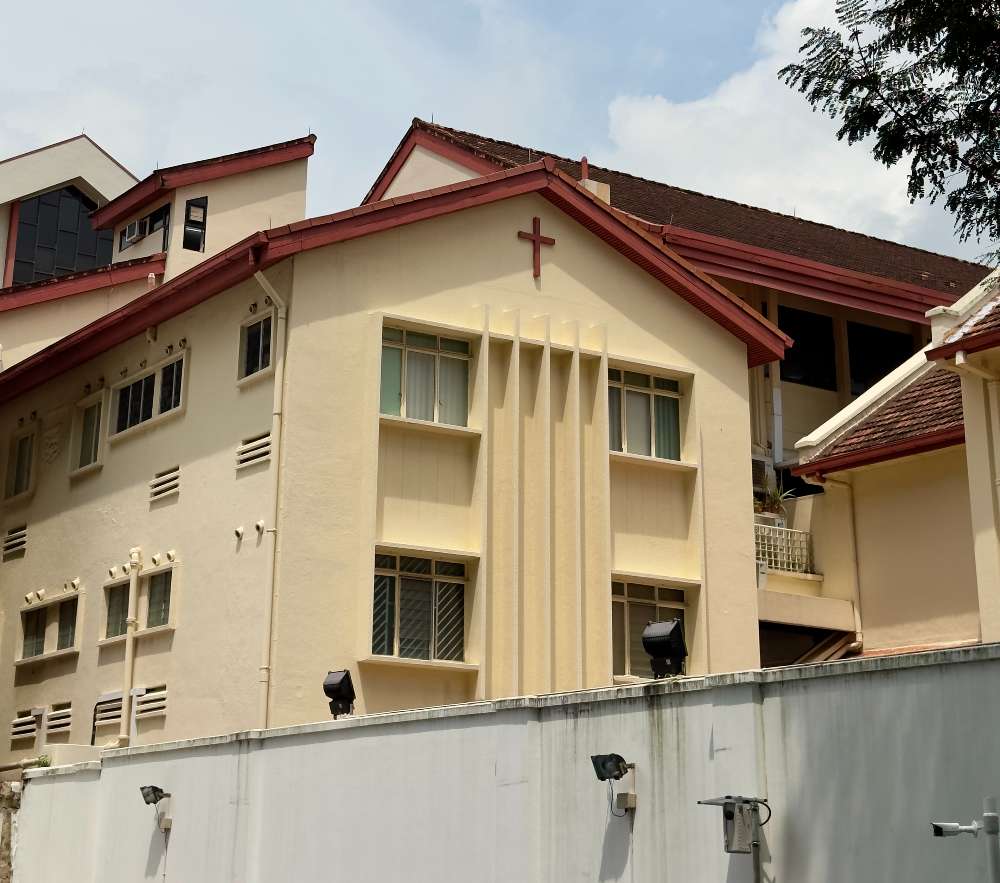 IMAGE: NG KAI
IMAGE: NG KAI
Following Keasberry's death in 1875, Reverend William Young, an elderly missionary from the LMS carried on his legacy, ministering at the Malay Chapel until his departure for England due to poor health roughly ten years later. In 1886, the English Presbyterian Mission acquired the Malay Chapel from the LMS.
By this time, the congregation was mainly made up of Peranakans, with few Malays attending services. Consequently, the chapel was renamed the Straits Chinese Church in 1886, and local leaders were appointed to guide the congregation.
One of the initial leaders within the church was convert Song Hoot Kiam, a Straits Chinese native to Malacca, who actively preached and led singing during services. His son, Sir Song Ong Siang, later gained recognition as the first Chinese in Singapore and Malaya to be knighted by the British crown in 1936.
Apart from being a preacher and chorister, Sir Song Ong Siang also advocated for education for girls; he co-founded the Singapore Chinese Girls' School (SCGS) with Dr Lim Boon Keng in 1899. In 1904, the church established a Widows' and Orphans' Home to support families who had lost their men at a young age to various ailments due to a lack of public healthcare.
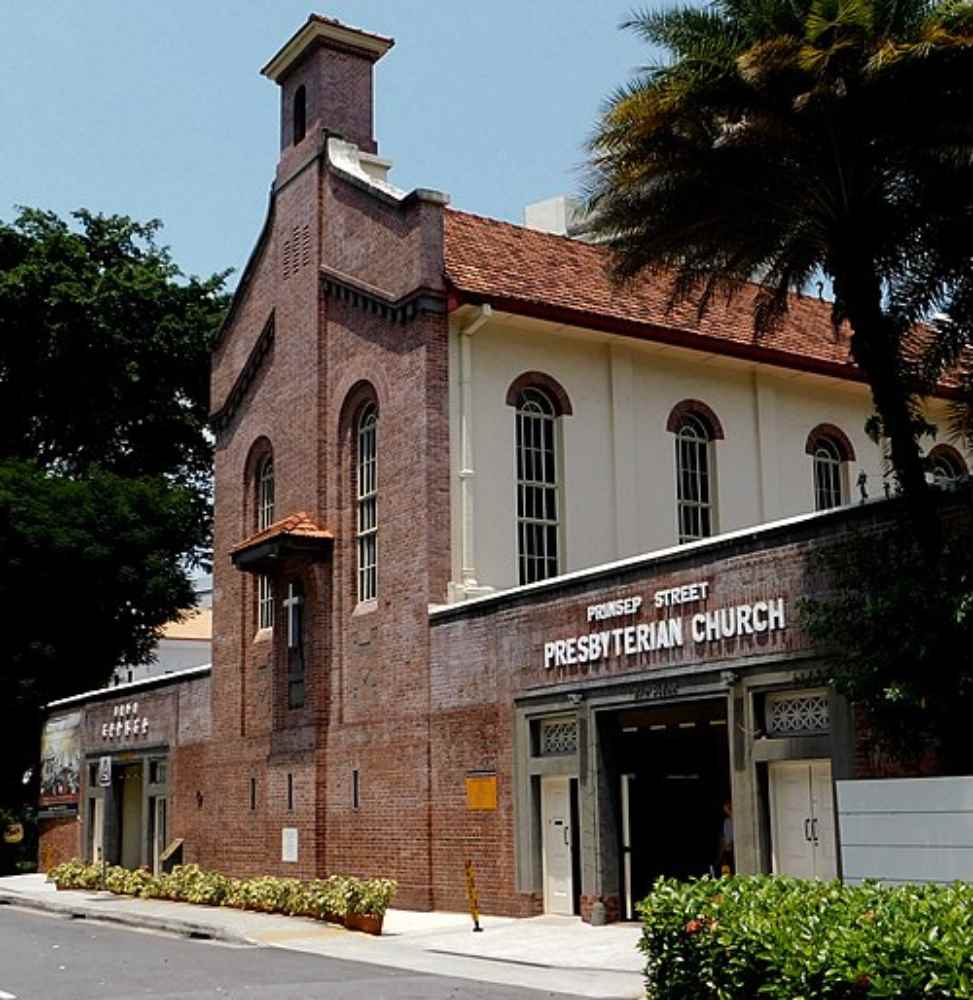 IMAGE: WIKIMEDIA COMMONS/@ROYSOUZA
IMAGE: WIKIMEDIA COMMONS/@ROYSOUZA
In 1901, preparations began for the construction of a new church building. Following the demolition of the old church in 1930, the cornerstone for the new edifice was laid by Sir Song Ong Siang, on 5 Mar 1930. The new church building was inaugurated on 4 Feb 1931.
In Nov 1931, the church was renamed Straits Chinese Presbyterian Church, after having joined the Synod (Council) of the English Presbytery. By the 1950s, the number of Peranakans attending services dwindled, leading to a cessation of Malay-language services. Following a referendum by church leaders in 1955, the church changed its name to Prinsep Street Presbyterian Church.
Its new Chinese name, Pan Shi Tang (磐石堂, "Church of the Rock"), was bestowed by Dr Jou Bienming, a retired professor from Amoy University in China. The Chinese characters "磐石" (pronounced "pan shi" in Hanyu Pinyin) were selected for their phonetic resemblance to "Prinsep" and their symbolic meaning of a rock, reflecting the church's enduring legacy. In 1996, PSPC underwent expansion to accommodate the growing congregation, and air-conditioning was installed.
In 1930, the Singapore Boys’ Brigade was founded in the church by Scottish architect James M. Fraser. The uniformed group was established with the aim of promoting and cultivating Christian values such as obedience, reverence, and discipline, among boys and young men.
Some notable alumni include Lieutenant-General (Ret) Winston Choo (the Singapore Armed Forces' first Chief of Defence Force), and Khoo Boon Hui (former Commissioner of the Singapore Police Force).
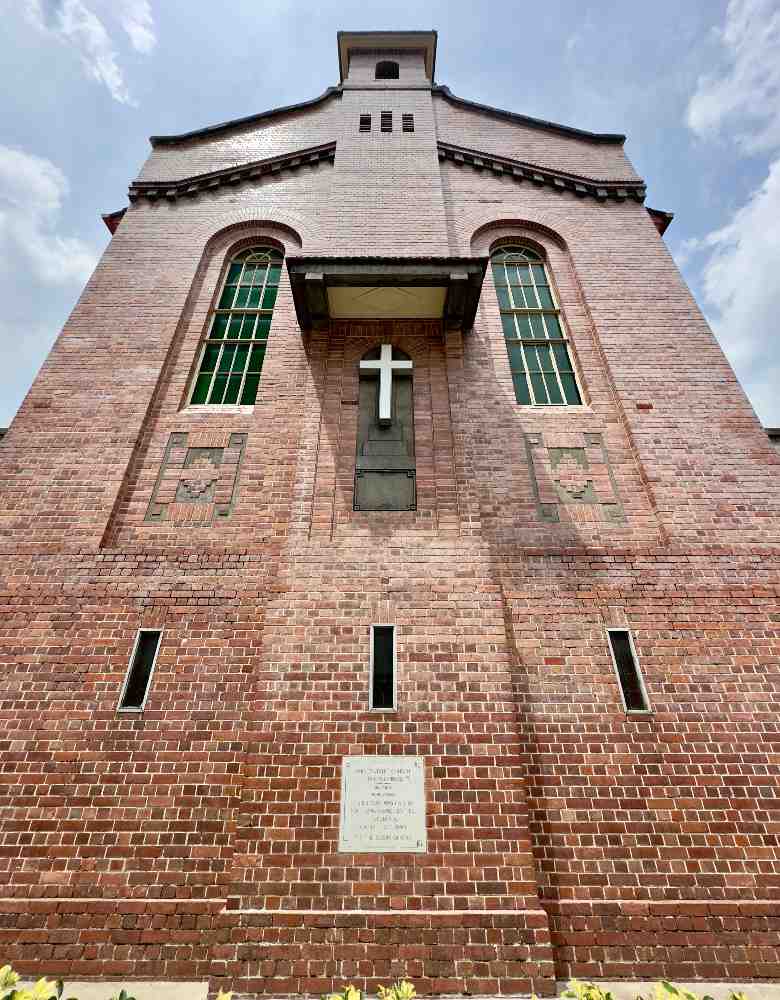
IMAGE: NG KAI
📐 Design and architecture
C. J. Stephens from the esteemed local architectural firm Swan & Maclaren was responsible for the design of PSPC in a modern fresco style that was popular in the United States in the 1930s. The church's striking red-brick exterior is also reminiscent of the grand Romanesque churches of Europe.
The building's sturdy walls allow for lofty ceilings, evoking a sense of spaciousness and grandeur. Dominating the front facade is a prominent tower and belfry (the part of a bell tower in which bells are housed), crowned by a modest tiled canopy sheltering a simple white cross.
Inside, the focal point is the altar area, accentuated by a large wooden cross framed by a brick-faced arch. Decorative brickwork embellishes the doors, while circular windows adorn the sanctuary walls. Arched clerestory windows bathe the interior in natural light, creating a serene ambience. These windows facilitated airflow before the arrival of modern air-conditioning systems.
🕖 Opening hours
Regular visiting hours are weekdays, 9am to 5pm.
🎟️ Admission
Entry is free.
For the latest updates on Wonderwall.sg, be sure to follow us on TikTok, Telegram, Instagram, and Facebook. If you have a story idea for us, email us at [email protected].







